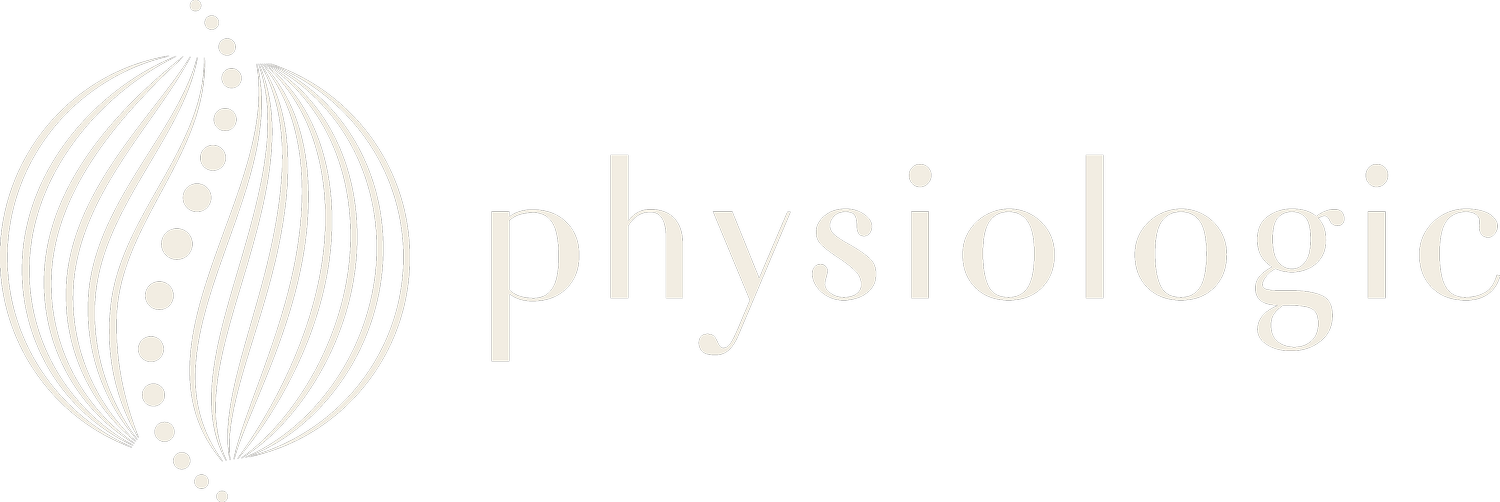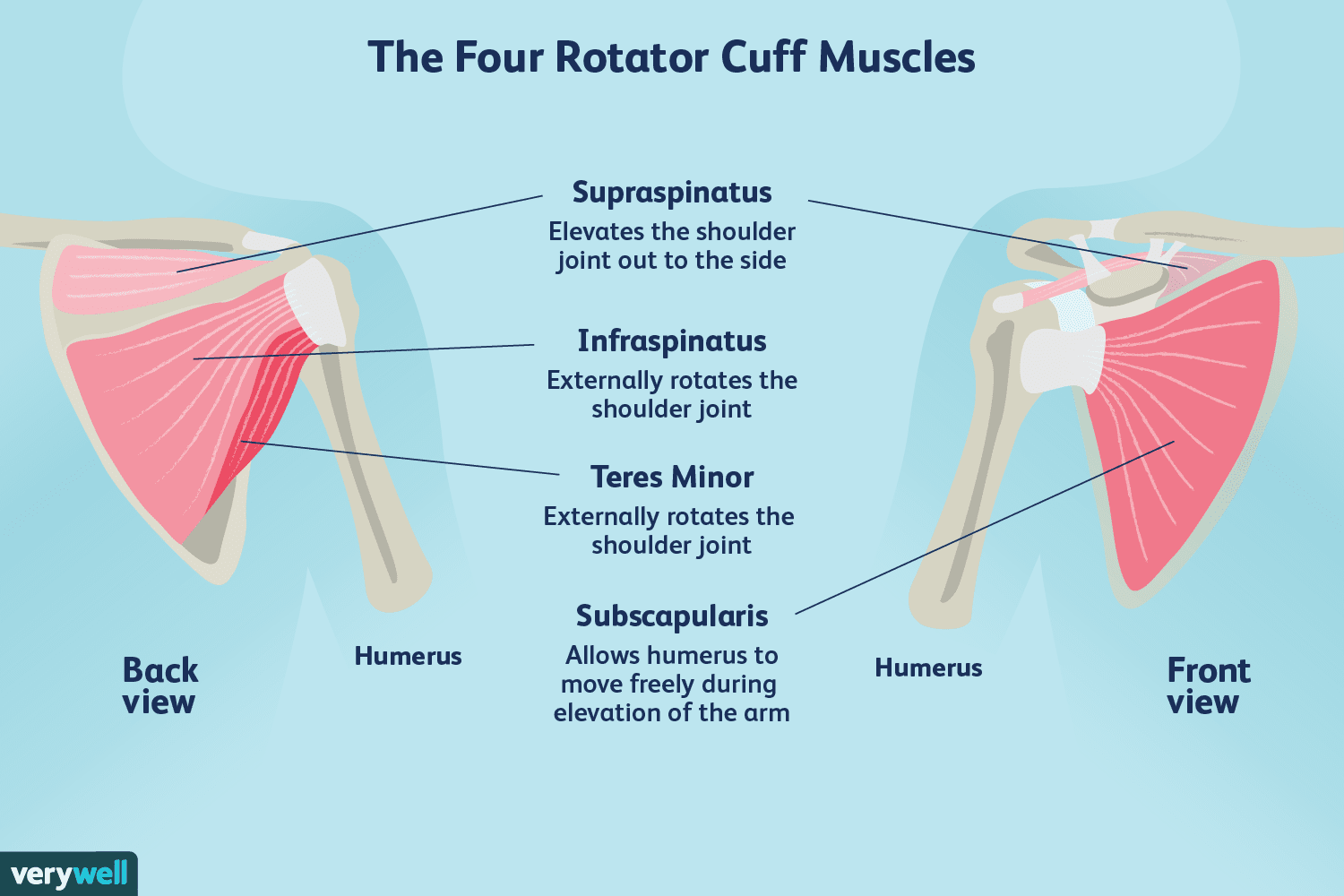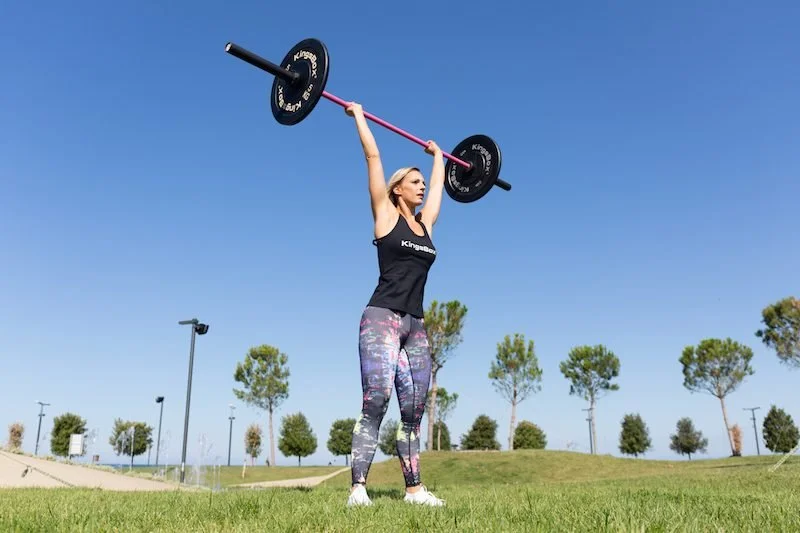Rotator Cuff Tendinopathy
One of the most common shoulder injuries that Physiotherapists treat, especially in the athletic population, is Rotator Cuff Tendinopathy.
We’ll talk about what Rotator Cuff Tendinopathy (aka ‘tendinitis’) is, what causes it and some general guidelines to manage it.
ROTATOR CUFF ANATOMY
The ‘rotator cuff’ is a group of 4 small muscles that provide stability to the shoulder. They are all attached to the scapula (shoulder blade), and connect into your humerus (shoulder bone) via a common tendon.
This means that the 4 individual muscles will eventually blend together to form one big strong tendon that connects into the shoulder.
An injury to any of these 4 muscles and their tendon can lead to a painful shoulder, which is when we call it a Rotator Cuff Tendinopathy.
ROTATOR CUFF TENDINOPATHY SYMPTOMS
The typical signs of someone having a rotator cuff tendinopathy is pain around the shoulder, usually on the outside or back of your shoulder.
In more severe cases, you’re likely to notice that you may not be able to fully raise your arm up completely, and even lightly touching the outside of your shoulder is painful.
The common aggravating factor that is consistent across all tendinopathies, is pain with increased loading.
Here are some common physical activities that will typically aggravate Rotator Cuff Tendon pain:
Lifting your arm up
Pushing (shoulder press, bench press, push ups)
Sports like tennis, swimming, Crossfit, Volleyball (upper limb dominant sports)
Did you know that the rotator cuff tendon can be aggravated even with seemingly simple activities of daily living?
Here are the most common activities that you may notice aggravate your Shoulder Pain
Placing your hand behind your back to tuck your shirt in, or do your bra up.
Washing your hair
Lying on your shoulder when sleeping
CAUSES OF ROTATOR CUFF TENDINOPATHY
Each individual will have their own unique factors that contributed to the development of their injury, but we’ll outline the main, common causes!
1: SUDDEN INCREASE IN ROTATOR CUFF LOADING
This when the Rotator Cuff Tendon has taken TOO MUCH load, TOO SOON.
In reality, this could look like someone who’s just starting learning tennis, and practices numerous serves in a session, over a few sessions in a week. The repetitive motion of a tennis serve stresses the rotator cuff tendon in a way it is completely unaccustomed to, eventually leading to shoulder pain.
Or in an elite sport setting, an athlete may develop Rotator Cuff Tendinopathy if their swimming training volume had suddenly gone up drastically in a short time frame, in preparation for an upcoming competition.
2: POOR BIOMECHANICS
Just like in our blog on Patellar Tendinopathy (Jumper’s Knee), a detailed biomechanical assessment is key to determine the contributing factors that are relevant to the injury.
When we treat athletes, we look at their athletic movement as a highly skilled and coordinated sequence of movements across different joints and muscles to play their sport.
We have to look at the entirety of how their body moves as a whole and identify any of the moving parts that are potentially dysfunctional or sub-optimal.
These dysfunctional parts usually lead to overcompensation of load elsewhere - commonly being the shoulder joint.
A common example is a new Crossfit athlete, who seems to have difficulty with overhead pressing movements like a Thruster, Push Press, or Handstand Push Ups.
In Crossfit movements like a Thruster, the key to moving well is to optimise your body’s efficiency by coordinating a transference of force from your legs up toward your shoulders.
However in a new athlete, they may not be as smooth in this complex movement, and become overly reliant on their shoulders to push the weight up.
Gradually over time, if the athlete starts adding weight, and doesn't work on his/her movement efficiency, their shoulder will be overloaded and the rotator cuff tendons may become injured and develop tendinopathy.
An in-depth analysis of your athletic movement is essential to determine what your movement looks like and where it could be optimised to address the cause of your injury.
Our team at Physiologic have years of experience working with elite athletes to identify the cause of their injuries, and to prescribe effective rehabilitation protocols that directly addresses their biomechanical deficiencies, solving the cause of their injury for good.
3: MUSCULAR WEAKNESS
When it comes to rotator cuff injuries, research has shown that a weakness in the rotator cuff can certainly be a factor in the development of a tendinopathy.
Naturally, the shoulder has a huge range of motion, which means that the rotator cuff muscle group has to be strong in ALL ranges of motion, especially if your sport or job demands repetitive overhead activity.
4: JOINT STIFFNESS
Stiffness or lack of mobility in the shoulder and spine are common contributing factors to the development of a rotator cuff tendinopathy.
For example, if we take a Crossfit athlete again having shoulder pain with Thrusters, I would always assess their Thoracic spine’s mobility into extension.
If they are limited in extension, I know that the shoulder muscles have to work even harder to compensate for the lack of thoracic mobility, in order to be able to press the weight up overhead to complete the rep.
Over time, this overcompensation on the Rotator Cuff can lead to the development of a tendinopathy
PHYSIOTHERAPY TREATMENT OF ROTATOR CUFF TENDINOPATHY
TEMPORARY PERIOD OF REDUCED LOADING
As a general principle, we’ll usually recommend a temporary period of reduced activity (NOT COMPLETE REST) initially, to allow the pain to settle and avoid continuous aggravation.
This is important to break the vicious cycle of doing too much, causing more damage, having more pain and so on.
Note how we did not recommend complete rest, this is important.
If you go back to our initial blog on Tendinopathies, one of the most effective ways to rehabilitate a tendon effectively is to LOAD IT!
This means that your Physiotherapist will advise you on what you CAN still do, while you’re recovering from your Rotator Cuff Tendinopathy.
Commonly, this may be advice to avoid overhead movements, but strength exercises in the gym like rows, lat pulldowns may still be appropriate.
ISOMETRICS FOR PAIN RELIEF
Isometrics are a useful tool that has been proven to be a powerful pain relieving exercise in people with tendinopathies.
They are also an excellent rehab exercise that starts to encourage some collagen fibre realignment and replenishment in the injured tendon.
Here’s how we perform isometrics to help with Rotator Cuf Tendinopathies.
ROTATOR CUFF MUSCLE STRENGTHENING
As mentioned earlier, one of the contributing factors of Rotator Cuff Tendinopathy is weakness in the shoulder muscles.
So to truly rehabilitate from this injury, Physiotherapists must prescribe challenging shoulder exercises to improve the strength and capacity of these muscles.
Here are some basic exercises you can try to help improve the strength of your rotator cuff muscles.
ADDRESSING DYSFUNCTIONAL BODY PARTS
As mentioned earlier, dysfunctional joints as a result of previous injuries or poor movement patterns can be contributing to the overload of your Rotator Cuff Tendon.
So part of the rehabilitation program must address these weak links - if not, your pain is likely to come back again!
A common component is to look at improving scapular stability, and integrating good core control with shoulder movements.
Here’s a row integrated with a bird dog exercise that combines shoulder and core activation.
For a more advanced exercise, Turkish Get Ups are excellent as it incorporates shoulder, core AND leg work.
ADDRESSING STIFFNESS
Stiffness, or hypomobility, in joints such as the shoulder or thoracic spine can certainly lead to the development of a rotator cuff tendinopathy.
A common area to improve your flexibility is your Thoracic Spine. Check out the video below for some simple mobility drills aimed at improving Thoracic Extension, a movement crucial to help improve your shoulder function.
SHOCKWAVE THERAPY
We briefly mentioned shockwave therapy in the tendinopathy blog, and we generally reserve this treatment modality for more chronic cases.
It is an uncomfortable procedure, but has been proven to be effective in encouraging better recovery in Chronic tendon injuries.
At Physiologic, we have a state of the art Piezowave shockwave machine that many clients have experienced benefit from when we treat their Rotator Cuff Tendon.
It is also helpful for calcific tendinopathy (calcium deposits within tendon) which doesn’t tend to respond well to traditional Physiotherapy care. Imaging (XRAY/US/MRI) is required to diagnose calcific tendinopathies.
RETURN TO ACTIVITY/SPORT LOAD MANAGEMENT
The most important aspect for the treatment and prevention of re-injury, is for the Physiotherapist to guide the client safely on their return to activity or sport.
The Physiotherapist is responsible for monitoring, adjusting and guiding the client through gradually increasing activity as their body allows.
Too much activity too soon and you’ll be back at square one.
Not enough activity and you may not reach your ultimate goals!
Speak with one of our expert Physiotherapists experienced in providing complete injury solutions for the management of Rotator Cuff Tendinopathies.
CONCLUSION
The best solutions for overcoming Rotator Cuff Tendon starts with a detailed assessment to identify ALL your unique contributing factors.
Then comes the hard work, adhering to the guidelines your Physiotherapist has set out for you, and being consistent with the rehabilitation program.
If you’re dealing with Rotator Cuff Tendinopathy, get in touch with us to see how we can help get you out of pain, and back performing at your best!
About the Author
Ryan Tan is our Clinical Director and Physiotherapist here at Physiologic Hong Kong. He’s had over 10 years of experience as a sports and musculoskeletal Physiotherapist, having looked after elite athletes such as the NZ Rugby 7’s team and more recently, some of Hong Kong’s top Trail Runners. He attributes his client’s successes to their commitment in being diligent with his individual rehabilitation programs, and curated treatment protocols for each individual. Excellent relationships with some of Hong Kong’s top Orthopaedic Surgeons also allows Ryan to provide a truly multidisciplinary team approach to his clients health care. Contact us to speak with Ryan if you are looking for an experienced Physiotherapist to guide you back to your competitive best!



